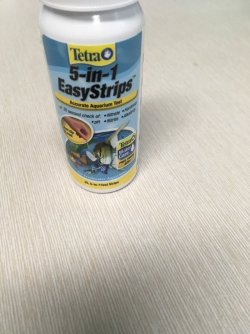There is an easier and, imo, better way to test how much "stuff" is in your water that goes beyond GH and KH. To explain requires a short bit of info on water.
Pure water has no GH or hardness or anything else for that matter. As a result pure water is also a poor conductor of electricity. When "stuff" accumulates in pure water, it conducts electricity. The more stuff, the more electricity it conducts.
The best way to measure what sort of things, in total, are in your water is to test the conductivity. This is done with a digital device with two small probes. You submerge the probes and one probe emits a known electrical charge into the water. The other probe then tests what amount of electricity it receives. Usually, the measurement scale used for this is microsiemens. However, there is a simpler way of expressing this, TDS aka Total Dissolved Solids. TDS is measured using a ppm scale.
A TDS tester is actually measuring conductivity, but then it uses a fixed formula which converts the microsiemens to PPM. I find PPM a lot easier to understand than the actual conductivity numbers.
One important consideration with TDS. It includes a lot of stuff in water including ions. Nitrate is an ion, ammonium is an ion. Literally anything whose chemical formula has a + or - at the end is the ionic form of something else. While this tester will not tell one how much of any individual thing may be present. It tells you about the total of all things present. This includes things like organics, calcium, GH, KH etc.
Now comes the good part. You can buy a usable hand held TDS Tester on Amazon for about $10. I have used this tester for a number of years. It will also measure Temp. Some are in C and others in F.
https://www.amazon.com/dp/B07QQRRBZ7/?tag=ff0d01-20





